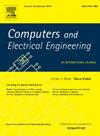适用于 SCADA 物联网应用的分布式网络协议 3 (DNP3) 的有效入侵检测方案
IF 4.9
3区 计算机科学
Q1 COMPUTER SCIENCE, HARDWARE & ARCHITECTURE
引用次数: 0
摘要
近几十年来,计算机和互联网的广泛应用使人们越来越依赖数字技术。由监控和数据采集(SCADA)支持的物联网(IoT)应用现已广泛应用于核电站、石油和天然气开采以及炼油厂等各个领域。然而,要抵御黑客和入侵者的潜在威胁,确保计算机网络和此类自主系统的安全至关重要。本文通过部署不同的机器学习算法(简称 IDM-DNP3),提出了一种入侵检测方案。这些算法经过严格训练,并在包含九种分布式网络协议 3 (DNP3) 测试平台攻击的广泛数据集上进行了测试。利用一系列算法,成功开发了一个多类分类模型,用于检测与 SCADA 和 DNP3 相关的攻击。对比研究表明,与其他现有方案相比,IDM-DNP3 能够以更高的准确率检测潜在威胁。本文章由计算机程序翻译,如有差异,请以英文原文为准。
An effective intrusion detection scheme for Distributed Network Protocol 3 (DNP3) applied in SCADA-enabled IoT applications
The widespread adoption of computers and the Internet in recent decades has led to a growing reliance on digital technologies. Supervisory Control and Data Acquisition (SCADA)-enabled Internet of Things (IoT) applications are now used in various sectors such as nuclear power plants, oil and gas extraction, and refineries. However, ensuring the security of computer networks and such autonomous systems is essential to thwart potential threats from hackers and intruders. In this article, an intrusion detection scheme is proposed by deploying different machine learning algorithms (referred to as IDM-DNP3). These algorithms are rigorously trained and tested on an extensive dataset encompassing nine Distributed Network Protocol 3 (DNP3) testbed attacks. Utilizing a range of algorithms, a multi-class classification model was successfully developed for detecting attacks related to SCADA and DNP3. The comparative study conducted shows that IDM-DNP3 can detect potential threats with higher accuracy than other existing schemes.
求助全文
通过发布文献求助,成功后即可免费获取论文全文。
去求助
来源期刊

Computers & Electrical Engineering
工程技术-工程:电子与电气
CiteScore
9.20
自引率
7.00%
发文量
661
审稿时长
47 days
期刊介绍:
The impact of computers has nowhere been more revolutionary than in electrical engineering. The design, analysis, and operation of electrical and electronic systems are now dominated by computers, a transformation that has been motivated by the natural ease of interface between computers and electrical systems, and the promise of spectacular improvements in speed and efficiency.
Published since 1973, Computers & Electrical Engineering provides rapid publication of topical research into the integration of computer technology and computational techniques with electrical and electronic systems. The journal publishes papers featuring novel implementations of computers and computational techniques in areas like signal and image processing, high-performance computing, parallel processing, and communications. Special attention will be paid to papers describing innovative architectures, algorithms, and software tools.
 求助内容:
求助内容: 应助结果提醒方式:
应助结果提醒方式:


